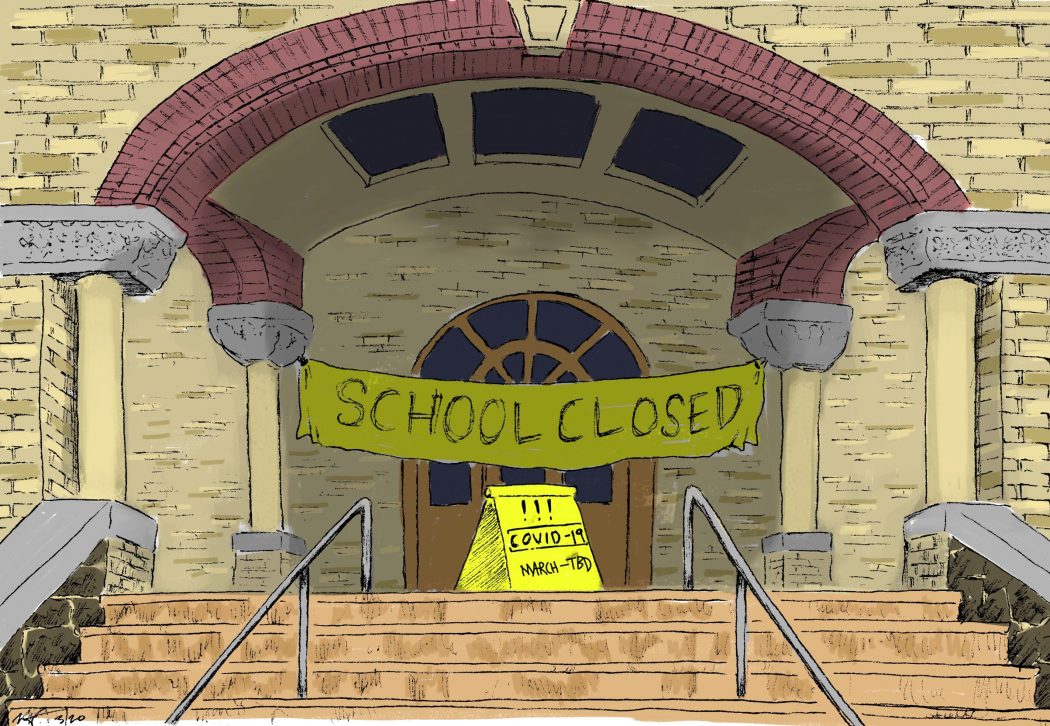Opinion: Why Utah State’s response to the COVID-19 pandemic was justified
In case you are living in a bubble, Utah State University, along with other colleges and schools around Utah, recently took precautions to prevent the spread of COVID-19. On that note, if you do live in a bubble, then consider yourself ahead of the curve.
The actions taken by USU since March 11 included canceling all on-campus events, closing the ARC, canceling non-essential travel and announcing a transition from in-person instruction to online classes for the remainder of the semester. The commencement ceremony for 2020 graduates is still up in the air, with a decision coming April 1. President Noelle Cockett assured students that the university is “working toward implementing actions, rather than wishing we had been implementing more precautions.”
Whether you are excited or agitated by this news, the university took appropriate action and has the best interest of students in mind.
When the university made its decision, the cases of COVID-19 in Utah seemed relatively low and far from Logan, with the numbers split between Salt Lake City and Summit County. However, when taking into account the number of infections across the country and the rate by which they have grown, the question isn’t if the virus would spread in Utah — but when.
And it didn’t take long.
At the time of this article’s online publishing, the number of patients infected with COVID-19 in Utah is 21, with the latest diagnoses marking the first community transmissions in the state. On the surface, it doesn’t seem as dire compared to, say, California or New York, whose total cases “account for more than one-third of the nation’s coronavirus cases,” according to a recent article in the New York Times. However, it wouldn’t take much for a small town like Logan to see a drastically exponential outbreak if someone does contract COVID-19.
Numbers aside, it was crucial for USU to be proactive in protecting its biggest assets: the students. With the amount of people who attend classes, on any given day, a single instance could spread like a wildfire, and we would be on full lockdown. Sure, it will be unfortunate to have to sacrifice campus events, as well as athletic activities, but it is better to be safe than sorry.
There is good news for Aggie students as some facilities on USU’s campus will remain open, which means people will have access to the library, certain labs and the TSC. Although the transition to online-only classes will affect many students with unconventional course curriculum (off-campus internships, work placement programs, etc.) the college will create alternative assignments to compensate for those classes.
What is important to recognize is that USU, in coordination with the state of Utah, takes this pandemic seriously. Gov. Gary Herbert echoed this sentiment during an address to the state, saying that “Utah is a proactive state, and a prepared state.” Students also must realize that there is an abundance of misinformation regarding the gravity of the situation. Many government and medical websites have dedicated their time to provide accurate and extensive information to the public. So while you are holed up in your dorm, apartment or other form of housing, take advantage of those resources and practice safe social distancing. It may not seem like it now, but these are the steps we need to take in order to ensure everyone is prepared for the worst.
More information on USU’s efforts to prevent COVID-19: http://usu.edu/covid-19
Other helpful links:
Center for Disease Control and Prevention official site:
“Mythbusting” COVID-19 misinformation: https://www.who.int/emergencies/diseases/novel-coronavirus-2019/advice-for-public/myth-busters
US map of COVID-19 cases:
https://www.nytimes.com/interactive/2020/us/coronavirus-us-cases.html
Utah Summit County COVID-19case signals community spread:
https://health.utah.gov/featured-news/new-case-of-covid-19-in-summit-county-signals-community-spread
Featured image designed by Keith Wilson. The opinions in this article do not necessarily reflect his own.

